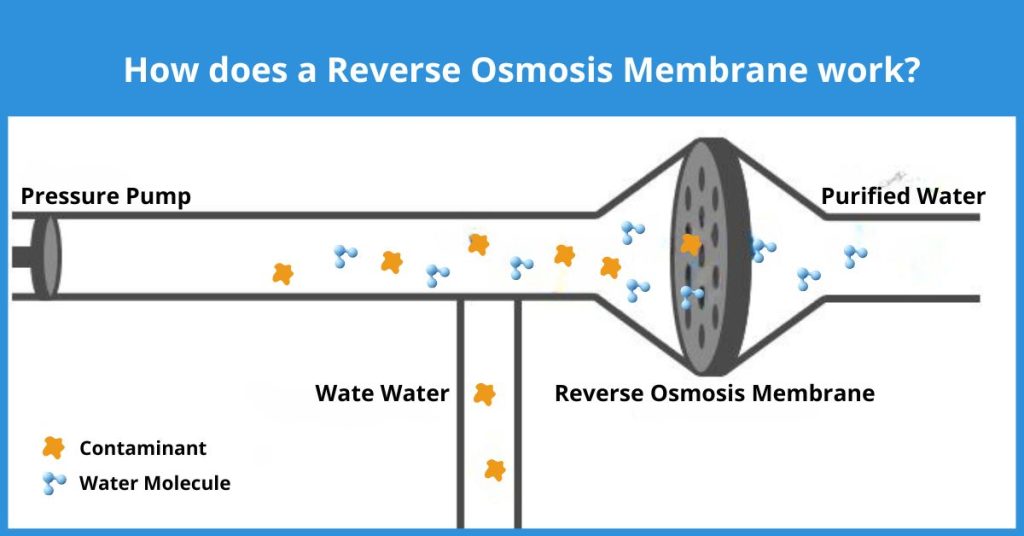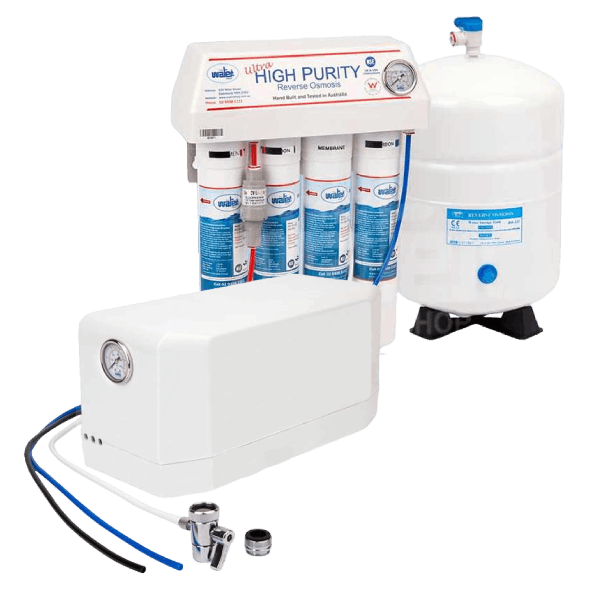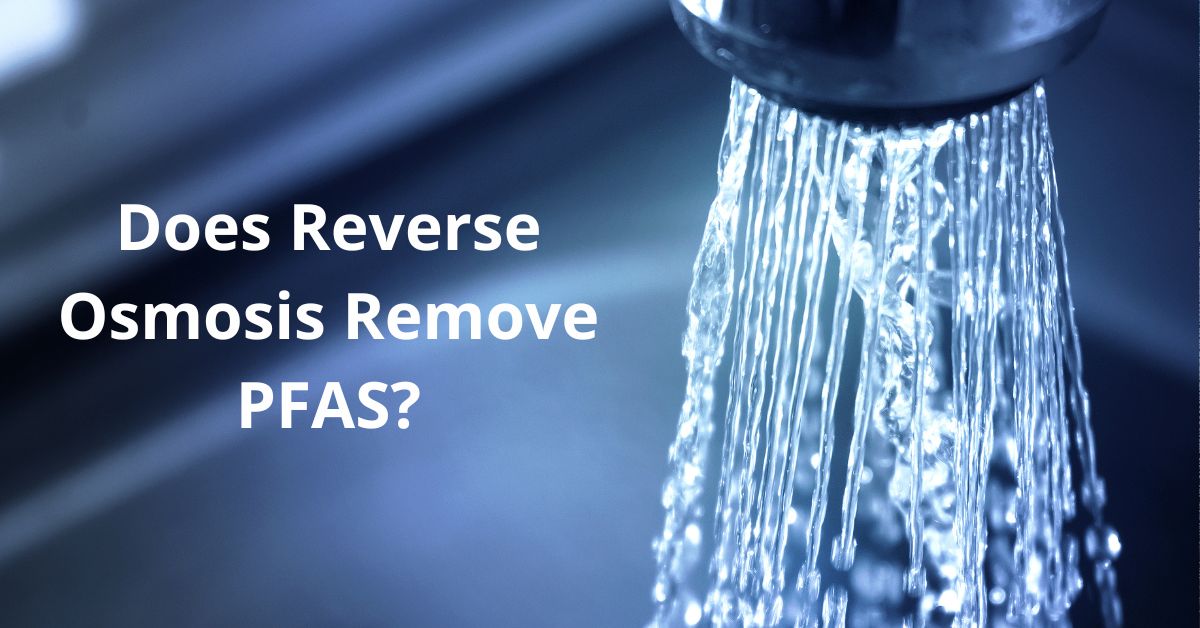Water filtration professionals are often asked about the effectiveness of various water treatment methods. One question that’s been coming up more frequently is: does reverse osmosis remove PFAS? It’s a great question, and I’m excited to dive into this topic today.
Does reverse osmosis remove PFAS from drinking water?
To be clear, yes, studies have shown that reverse osmosis is highly effective at removing PFAS from drinking water. But before we get into how this works, let me explain PFAS and why their removal is so important.
What are PFAS?
Since the 1940s, various industries have used PFAS, or Per- and Polyfluoroalkyl Substances, a group of man-made chemicals. You might have heard them called “forever chemicals” because they don’t break down easily in the environment or in our bodies.
These chemicals are found in many products we use daily, from non-stick cookware to water-resistant clothing. Unfortunately, they’ve also made their way into our water supplies, raising concerns about their potential health impacts.
Locations of PFAS (per- and polyfluoroalkyl) substances in the Australian environment:

Source: https://pfas.australianmap.net/
Why should we be concerned about PFAS in our water?
As someone who’s spent years studying water quality, I can tell you that the presence of PFAS in drinking water is worrying. These chemicals have been linked to various health issues, including:
- Increased cholesterol levels
- Changes in liver enzymes
- Increased risk of certain cancers
- Effects on the immune system
- Interference with hormones
Given these potential health risks, it’s no wonder that more and more people are looking for ways to remove PFAS from their drinking water. And that’s where reverse osmosis comes in.
How does reverse osmosis remove PFAS?
Reverse osmosis filtration is a powerful water purification process. When I explain it to my clients, I often use the analogy of a super-fine strainer. Here’s how it works:
- Pressure forces water through a semipermeable membrane.
- The membrane has tiny pores that allow water molecules to pass through.
- Larger molecules, like PFAS, are too big to fit through these pores.
- The result is clean, purified water on one side and concentrated contaminants on the other.
What makes reverse osmosis particularly effective for PFAS removal is the size of the membrane’s pores. They’re so small (typically around 0.0001 micron) that they can catch even these tiny “forever chemicals.”

The effectiveness of reverse osmosis water filters
In my professional experience, I’ve found reverse osmosis to be one of the most effective methods for removing PFAS from drinking water. Studies have shown that properly functioning RO systems can remove more than 99% of PFAS compounds.
This high removal rate is why I often recommend reverse osmosis filtration to my clients who are concerned about PFAS or other contaminants in their water.
Types of reverse osmosis systems
When it comes to choosing a reverse osmosis system, you have several options:

Undersink reverse osmosis: These systems are installed under your kitchen sink and provide filtered water directly through a dedicated faucet. They’re ideal for households that want purified water for drinking and cooking.
Benchtop reverse osmosis: These compact units sit on your countertop and are perfect for renters or those who don’t want to modify their plumbing. They’re also a good choice if you want the flexibility to move your system around.
Each type of system has its advantages, and the best choice depends on your specific needs and circumstances.
Other benefits of reverse osmosis
While we’re focusing on PFAS removal, it’s worth noting that reverse osmosis is a multi-tasking superstar when it comes to water purification. In addition to PFAS, an undersink water purifier using RO technology can also remove
- Other contaminants like lead, arsenic, and nitrates
- Dissolved solids like fluoride that can affect water taste and clarity
- Microorganisms like bacteria and viruses
This comprehensive filtration is why I often recommend RO systems to clients looking for an all-in-one water purification solution.
Factors to consider when selecting a reverse osmosis system
If you’re considering a reverse osmosis water filter for PFAS removal, here are a few things to keep in mind:
- Water waste: Reverse osmosis water filter do produce some wastewater as part of the filtration process. However, many modern systems are designed to minimise this waste.
- Mineral removal: Along with contaminants, reverse osmosis water also removes beneficial minerals from water. To address this, some systems include a remineralisation stage.
- Maintenance: Regular maintenance, including filter changes, is crucial for optimal performance. Make sure you’re comfortable with the maintenance requirements before investing in a system.
- Cost: While there’s an upfront cost for the system and ongoing costs for filter replacements, it’s more cost-effective in the long run compared to buying bottled water.
- Space: Determine whether you have space for the system you’re considering. A benchtop reverse osmosis might be better if you’re short on under-sink space.
My professional recommendation
As a water quality professional, I strongly recommend considering a reverse osmosis system if you’re concerned about PFAS in your drinking water. Whether you choose a benchtop reverse osmosis unit or an undersink reverse osmosis system, you’ll be taking a significant step towards ensuring the safety of your water.
Remember, the best system for you depends on your specific circumstances. Consider factors like your water usage, available space, and budget when making your decision.
A Powerful Solution for Removing PFAS and Protecting Your Health
So, does reverse osmosis remove PFAS? Absolutely. And it does so very effectively. While no water treatment method is perfect, reverse osmosis stands out as one of the best options for removing these persistent chemicals from our drinking water.
As we continue to learn more about the impacts of PFAS and other emerging contaminants, I believe that technologies like reverse osmosis will play an increasingly important role in protecting our health and the health of our families.
Clean, safe water is not a luxury – it’s a necessity. By understanding our options for water treatment and making informed decisions, we can all take steps towards ensuring that the water we drink is as pure and safe as possible.
Remember, whether you’re sipping a glass of water, brewing your morning coffee, or cooking for your family, the quality of your water matters. And with the right reverse osmosis system, you can have peace of mind knowing that you’re doing all you can to remove PFAS and other contaminants from your water.




